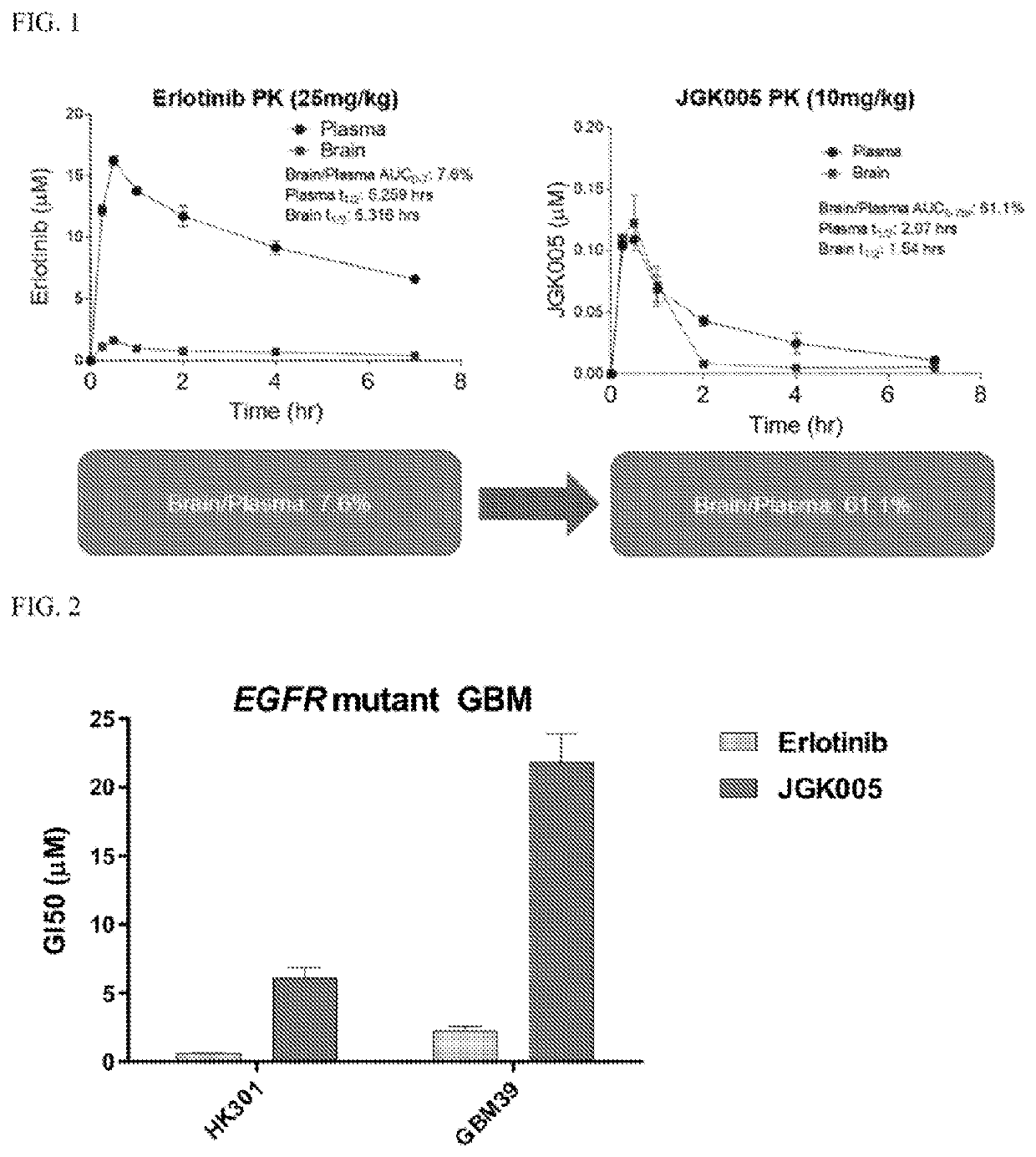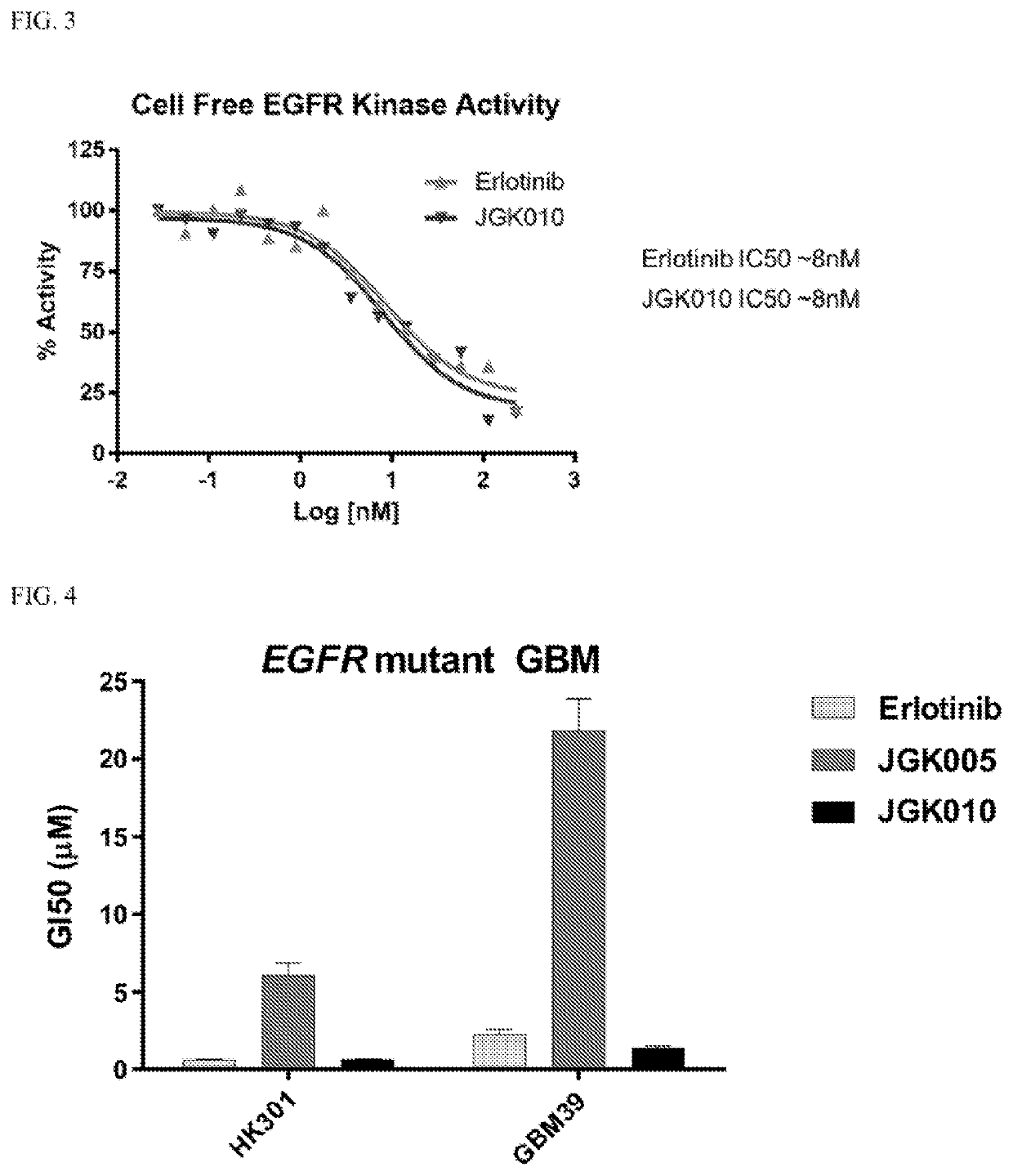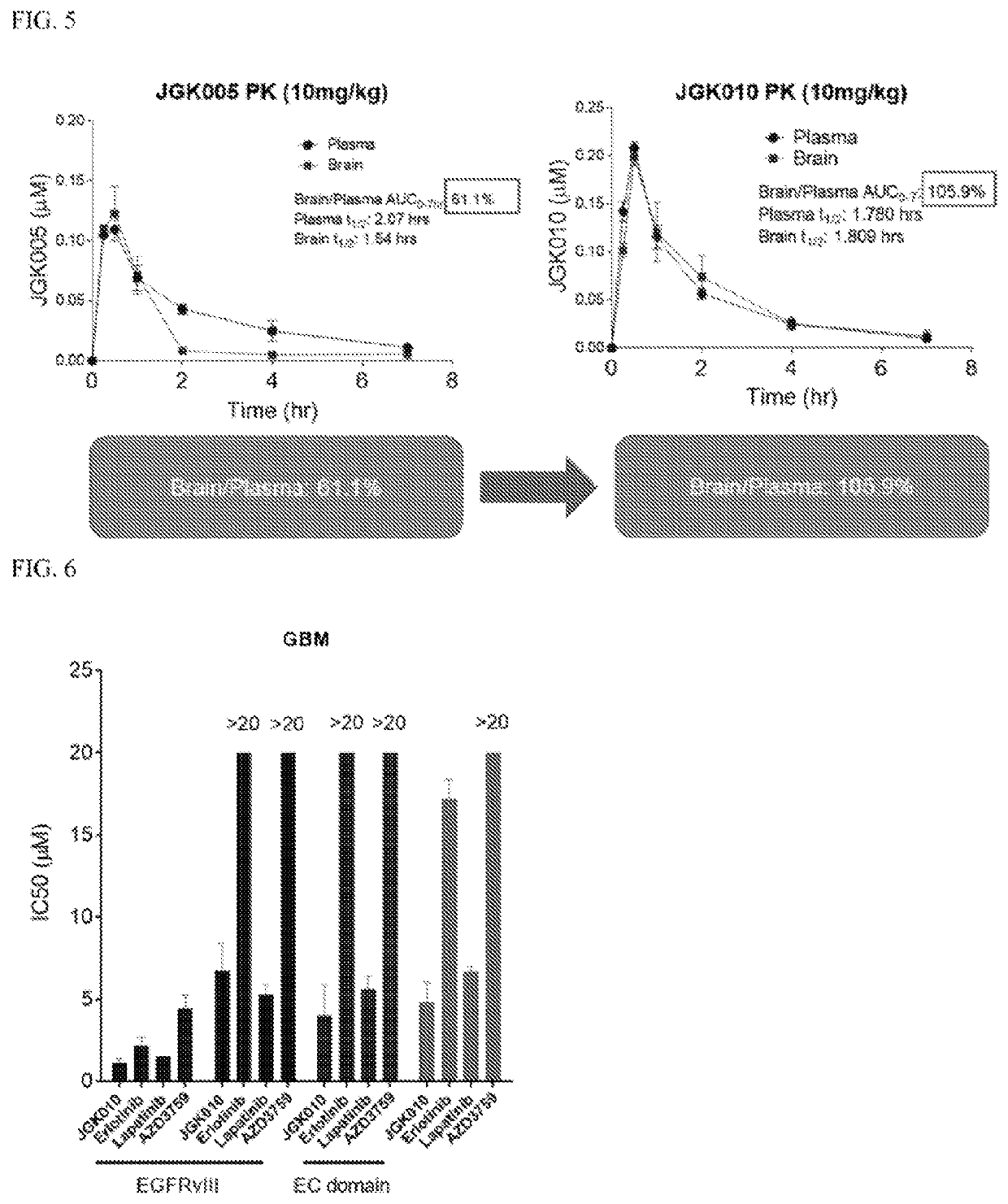Compositions and methods for treating cancer
a cancer and composition technology, applied in the field of compositions and methods for treating cancer, can solve the problems of targeted drugs that have failed in glioblastoma patients, limited clinic efficacy of current therapies such as erlotinib, lapatinib, gefitinib and afatinib, and achieve the effect of shifting the apoptotic balance in metabolic responders
- Summary
- Abstract
- Description
- Claims
- Application Information
AI Technical Summary
Benefits of technology
Problems solved by technology
Method used
Image
Examples
example 1
on of Exemplary Compounds of the JGK Series
[0333]General Procedures:
[0334]All reactions were routinely carried out under an inert atmosphere of argon. Unless otherwise noted, materials were obtained from commercial suppliers and were used without purification. All solvents were purified and dried by standard techniques just before use. THF and Et2O were freshly distilled from sodium and benzophenone. Methylene chloride, toluene, and benzene were purified by refluxing with CaH2. Reactions were checked by thin layer chromatography (Kieselgel 60 F254, Merck). Spots were detected by viewing under a UV light, and by colorizing with charring after dipping in a p-anisaldehyde solution or phosphomolybdic acid solution. In aqueous work-up, all organic solutions were dried over anhydrous magnesium sulfate and filtered prior to rotary evaporation at water pump pressure. The crude compounds were purified by column chromatography on a silica gel (SilicaFlash P60, 230-400 mesh, SiliCycle Inc). Pr...
example 2
on of Further Exemplary Compounds of the JGK Series
General Chemistry Information
[0409]All chemicals, reagents, and solvents were purchased from commercial sources when available and were used as received. When necessary, reagents and solvents were purified and dried by standard methods. Air- and moisture-sensitive reactions were carried out under an inert atmosphere of argon in oven-dried glassware. Microwave-irradiated reactions were carried out in a single mode reactor CEM Discover microwave synthesizer. Room temperature reactions were carried out at ambient temperature (approximately 23° C.). All reactions were monitored by thin layer chromatography (TLC) on precoated Merck 60 F254 silica gel plates with spots visualized by UV light (λ=254, 365 nm) or by using an alkaline KMnO4 solution. Flash column chromatography (FC) was carried out on SiO2 60 (particle size 0.040-0.063 mm, 230-400 mesh). Concentration under reduced pressure (in vacuo) was performed by rotary evaporation at 25...
example 3
on of Further Exemplary Compounds of the JGK Series
[0436]General Procedures:
[0437]All chemicals, reagents, and solvents were purchased from commercial sources when available and were used as received. When necessary, reagents and solvents were purified and dried by standard methods. Air- and moisture-sensitive reactions were carried out under an inert atmosphere of argon in oven-dried glassware. Microwave-irradiated reactions were carried out in a single mode reactor CEM Discover microwave synthesizer. Room temperature (RT) reactions were carried out at ambient temperature (approximately 23° C.). All reactions were monitored by thin layer chromatography (TLC) on precoated Merck 60 F254 silica gel plates with spots visualized by UV light (Δ=254, 365 nm) or by using an alkaline KMnO4 solution. Flash column chromatography (FC) was carried out on SiO2 60 (particle size 0.040-0.063 mm, 230-400 mesh). Concentration under reduced pressure (in vacuo) was performed by rotary evaporation at 2...
PUM
| Property | Measurement | Unit |
|---|---|---|
| Mass | aaaaa | aaaaa |
| Mass | aaaaa | aaaaa |
| Mass | aaaaa | aaaaa |
Abstract
Description
Claims
Application Information
 Login to View More
Login to View More - R&D
- Intellectual Property
- Life Sciences
- Materials
- Tech Scout
- Unparalleled Data Quality
- Higher Quality Content
- 60% Fewer Hallucinations
Browse by: Latest US Patents, China's latest patents, Technical Efficacy Thesaurus, Application Domain, Technology Topic, Popular Technical Reports.
© 2025 PatSnap. All rights reserved.Legal|Privacy policy|Modern Slavery Act Transparency Statement|Sitemap|About US| Contact US: help@patsnap.com



